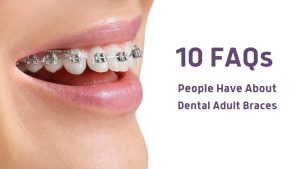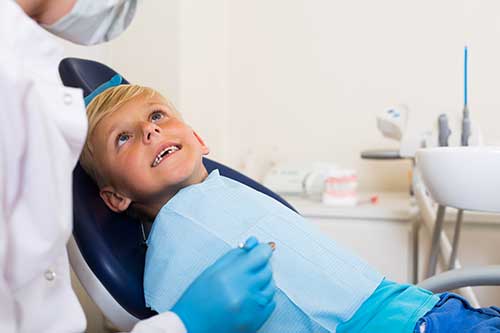Not known Facts About Legacy Orthodontics
Not known Facts About Legacy Orthodontics
Blog Article
Some Known Details About Legacy Orthodontics
Table of ContentsThe smart Trick of Legacy Orthodontics That Nobody is Talking AboutOur Legacy Orthodontics StatementsNot known Factual Statements About Legacy Orthodontics How Legacy Orthodontics can Save You Time, Stress, and Money.The Single Strategy To Use For Legacy Orthodontics
In addition, we provide adjustable treatment routines, versatile payment choices and an enjoyable, delightful experience.An orthodontist is a dental professional trained to detect, stop, and deal with teeth and jaw irregularities. They correct existing problems and are educated to determine issues that may establish in the future. Orthodontists deal with individuals of any ages, from children to adults. Individuals typically connect an ideal smile with good health and wellness.
Malocclusion, or misaligned teeth, can lead to dental problems, consisting of dental cavity, periodontal condition, and difficult or excruciating chewing. However not everyone is birthed with straight teeth. If you have a negative bite or big rooms between your teeth, you might wish to get in touch with a dental expert focusing on orthodontic care.
Indicators on Legacy Orthodontics You Need To Know
( Photo Credit Report: DigitalVision/Getty Images) Orthodontists use fixed and removable oral gadgets, like braces, retainers, and bands, to transform the placement of teeth in your mouth. Orthodontic therapy is for dental problems, consisting of: Crooked teethBite problems, like an overbite or an underbiteCrowded teeth or teeth that are too far apartJaw misalignmentThe goal of orthodontic treatment is to improve your bite.
A healthy and balanced bite ensures you can consume, chew, and speak appropriately. While you might consider orthodontists as mostly for kids or young adults that require braces, they can fix dental problems at any kind of age. Orthodontists attend university, dental institution, and orthodontic institution. After graduation, they spend 2 or 3 years in an orthodontic residency program.
, yet not all dental practitioners are orthodontists. They concentrate on two areas: Just how to effectively and safely relocate teeth How to effectively lead advancement in the teeth, jaw, and faceOnce an orthodontist has finished training, they have the alternative to come to be board accredited.
Our Legacy Orthodontics Statements
Misalignment, or malocclusion, is one of the most typical factor people see an orthodontist. It is hereditary and is the outcome of size distinctions in between the upper and lower jaw or in between the jaw and teeth. Malocclusion causes tooth overcrowding, a misshapen jaw, or uneven bite patterns. Malocclusion is usually treated with: Your orthodontist connects metal, ceramic, or plastic square bonds to your teeth.
If you have just minor malocclusion, you may be able to make use of clear dental braces, find out here now called aligners, rather than traditional braces (https://pubhtml5.com/homepage/neteb/). Some individuals need a headwear to assist relocate teeth right into line with pressure from outside the mouth. After dental braces or aligners, you'll need to put on a retainer. A retainer is a customized gadget that maintains your teeth in place.
They can develop additional room in the mouth without having to draw teeth. Orthodontists make use of cables, medical screws, or plates to sustain your jaw bone.
You may need to see an orthodontist if you have: Crowding or not sufficient space for all of your teethOverbite, when your top teeth come over your bottom teethUnderbite, when your base teeth are too much forwardSpacing or issues with gapsCrossbite, which is when your upper teeth fit behind your base teeth when your mouth is closedOpen bite or an upright space in between your front bottom and upper teethMisplaced midline, when the center of your base and top teeth don't align Correcting an oral malocclusion can: Make biting, chewing, and speaking easierImprove the symmetry of our face and your overall appearanceEase pain from temporomandibular joint conditionsDifferent your teeth and make them simpler to clean up, assisting avoid tooth degeneration or cavities It's usually a dental practitioner who first notices misaligned teeth during a regular exam.
Legacy Orthodontics - The Facts

During your first orthodontic appointment, you'll likely have: A dental examPhotos taken of your face and smileDental X-raysPanoramic (360 degree) X-rays of your face and headImpressions to develop mold and mildews of your teethThese tests will certainly aid your orthodontist understand exactly how to continue with your treatment. leesburg braces. An orthodontist is a dental professional who's had training to treat your teeth and jaw
An orthodontist is concentrated on your bite, so something like a chipped tooth would be managed by a dentist. Orthodontists are focused on your bite, or the method your teeth fit with each other, and the straightness of your teeth.
Ever asked yourself how celebs constantly appear to have completely lined up teeth? The answer commonly hinges on the competent hands of an orthodontist. But just what does an orthodontist do? Orthodontists are dental professionals that focus on correcting abnormalities in the teeth and jaws. Their proficiency exceeds simply creating a gorgeous smile; it reaches boosting your overall oral wellness and feature.
An Unbiased View of Legacy Orthodontics

, orthodontists have a diverse toolkit at their disposal. These tried-and-true braces make use of a system of brackets bound to the teeth and linked by cords.
Clear aligners, like Invisalign, are a preferred alternative for people looking for an extra very discreet treatment alternative. These removable trays are personalized to progressively change the teeth's position. Headwear might be utilized along with braces or aligners to use extra targeted pressures, specifically for correcting jaw disparities. In cases of narrow jaws, palatal expanders can be utilized to create space for appropriate tooth alignment.
Report this page